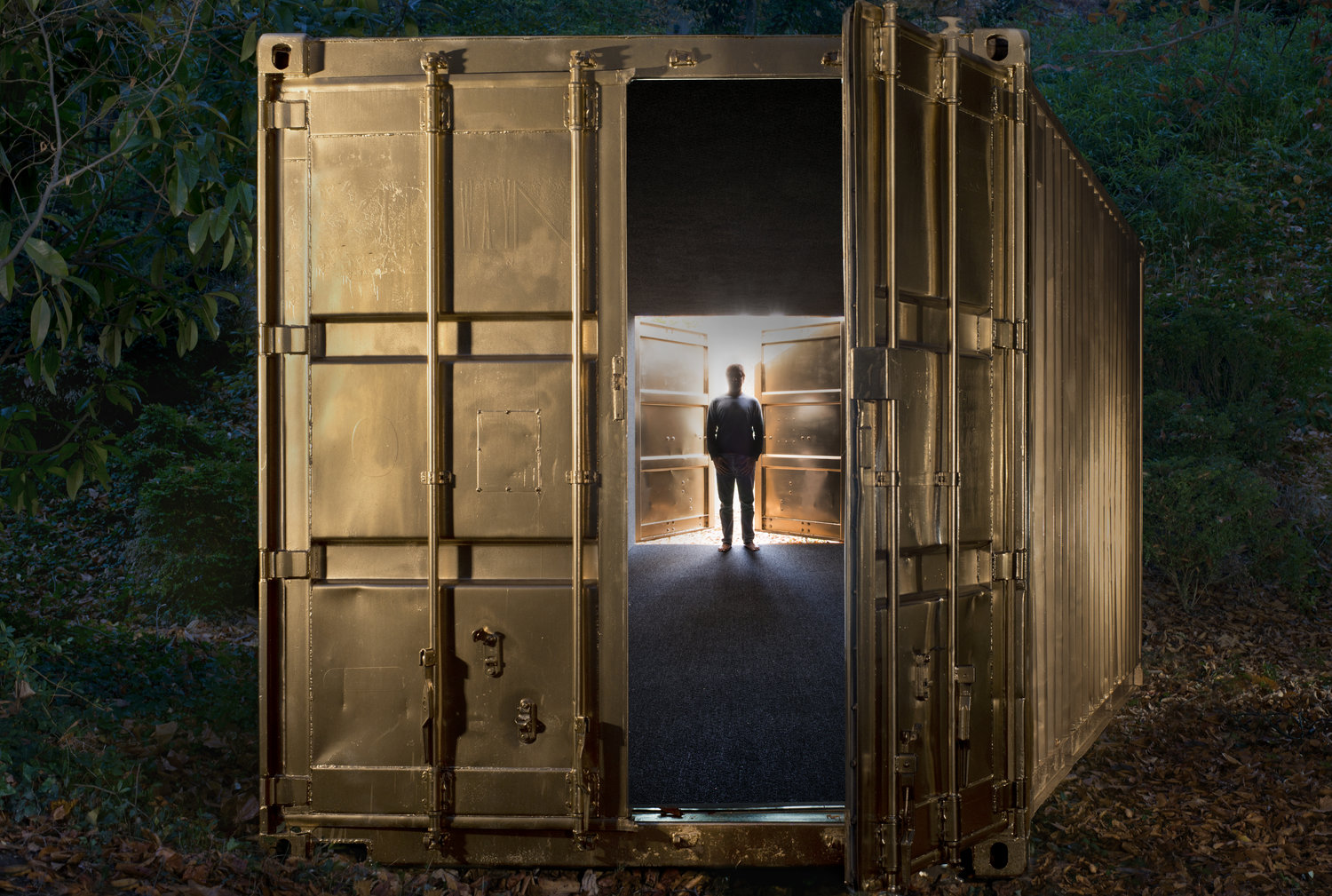
Despite a surplus of communication services, the world can feel like a disconnected place. Innovations like social media make it possible to reach people all over the world, but these platforms often become echo chambers more than anything. A startup company called Shared_Studios is trying to change that.
Shared_Studios creates what it calls "portals," gold-painted shipping containers that house lifesize video screens, which stream live to other portals elsewhere in the world. People in a portal in New York can talk to people in a portal in the Middle East as if they were in the same room, essentially taking video conferences to the next level.
Through these lifesize video portals, people can connect to new cultures and environments, the company says: It's one thing to learn about something and another to experience it firsthand. From their start as a social experiment, these portals are now beginning to see more use in business, particularly among companies looking to increase employee engagement.
How lifesize video evolved from art to industry
Shared_Studios’ portals popped up in late 2014: one in an art space in New York City and another in the Iranian capital of Tehran. After one of the first guests spent two hours talking to a stranger in Iran, the potential of the technology became evident. It wasn't long before crowds including middle-school students and celebrities was lining up to have a turn in the portal.
Using virtual reality (VR) to increase awareness is becoming more of a mainstream practice. Companies have used VR to immerse people in a world after climate change, helping them understand the gravity of the issue. These portals work similarly, offering an immersive experience of a situation somewhere else in the world.
Not long after their initial run in New York, the portals found use in corporate spaces. During its social impact week, Starbucks set up a portal for employees and customers to talk to coffee farmers in Rwanda. Networking and cybersecurity company Juniper Networks also uses one to help drive employee innovation.
Full immersion can lead to more natural conversation
Portals allow people to communicate with others they might never get the chance to talk to otherwise. Businesses have used video conference tools to streamline communication for years, and portals take these technologies one step further. They offer a level of immersion that a webcam on a laptop can't provide.
In a portal, participants see a life-sized image of the other location. They don't talk to a person's head and shoulders. They can see the whole person and his or her surroundings, as if they were face to face. One result is that long-distance conversations now feel more natural.

Photo: Converted cargo containers can now be a means to engage with citizens thousands of mile away with Shared_Studios lifesize video service.
"Portals [provide a] full-body, life-sized view, showing non-verbal cues . . . which are critical to effective communication," said Samantha Hacker, partnerships and business development manager at Shared_Studios. A lot of communication is unspoken. Traditional methods of long-distance video conferencing don't account for these signs like hand gestures and posture, but portals do.
Participants also see each other at eye level and in full size. This feature allows participants "to show attention, interest and respect by maintaining eye contact," Hacker explained. It feels like they're talking to a present person, not a video of one.
The potential of portals to transform business
The usefulness of lifesize video doesn't begin and end with more engaging conversation. News and social media allow people to hear about a global issue, but the use of this technology enables them to experience it. Global challenges like poverty and sustainability are real issues but may go unnoticed because many people don't directly feel or see their effects.
At last year's Venice Biennale, artists used similar technology to show people the global effects of climate change. By seeing rising water levels firsthand, visitors were able to gain a better understanding of the issue. Portals can bring people into new spaces like these VR exhibits, and even allow them to talk to people living in those areas.
Because they take the form of a shipping container, portals block out the rest of the environment. There are no distractions to remind people that they're not really in Tehran or Kabul. It's as close to a firsthand experience as they can get without being physically present.
This level of immersion means that employees can get a more well-rounded idea of the work they're taking on and how these results can leave a positive impact on the world. "Portals allow companies to amplify employee-led, community-based initiatives through workshops, mentorships and other service opportunities," Hacker told us. They increase engagement not only in employees' work, but also in their communities.
Lifesize video technology can show the need to look for out-of-the-box solutions or help grow empathy for people they don't see every day. By stepping into a portal, citizens can reap the social benefits and advantages when they step into another world.
Image credits: Shared_Studios

Jenna Tsui is a technology journalist who covers the latest news in technology, disruptive tech, and environmental science. You can read more of her work at The Byte Beat.














